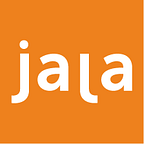Marking the Right Spot: How Punctuation Matters in Translation
When your sister sends a text message that goes, “let’s eat mum”, should you panic?
If your sister’s diet has changed dramatically, perhaps.
Otherwise, a missing comma (“let’s eat, mum”) clearly indicates how important punctuation marks are — and though often overlooked, changing punctuation in translation may alter the meaning of a text entirely.
Punctuation allows writers to create spacing, pause, syntax and nuances. In English, there are numerous forms of punctuation: the stately period, apostrophe, comma, colon, semi-colon, question mark, exclamation mark, parentheses and hyphen.
From the above example, it doesn’t take us long to agree then that punctuation is also meaningful in translating texts — which if done carelessly, can lead to both humourous and horrifying situations.
However, not every language follows this rule. Other languages use punctuation differently.
The Greek language for instance, uses the English semicolon (;) instead of a question mark (?). In German, French and sometimes Bahasa Indonesia, the full stop (.) is used as a separator for the thousand digit instead of a comma (,) which is used as a decimal point, particularly in price tags — 1,600 is therefore written as 1.600, while 1.60 becomes 1,60.
The way punctuation is used is thus understood differently.
Translator Daisy Rockwell explains how she translates punctuation and line breaks in Hindi and Urdu, such as the exclamation point, as the emphasis of these punctuations is different than in English.
In other languages, there is also a preference for a particular use of punctuation over the other. For example, English-French translator Jacob Siefring shares how native English writers prefer the comma over semicolon, which is the opposite for French writers.
What happens then when you encounter a language that has no punctuation?
Some languages do not write using punctuation marks.
For instance, the Thai language does not ordinarily punctuate its sentences — nor does it have spaces in between words within a sentence: IftranslatedexactlyasentenceinThaiwouldappearlikethis
If the sentence “let’s eat, mum” were to be translated into Thai, one would then have to be very careful with how the sentence is crafted in Thai. Nonetheless, there are indications in Thai to signal the start or end of a word, such as the vowel for “a” (ะ). A translator familiar with the written language would thus be more sensitive to these details.
Meanwhile there are other languages where punctuations have been adopted from English.
The Arabic language for example has adopted the use of punctuation very recently — where it previously did not exist. As it is written from right to left, the question marks (؟) and commas (،) are written in reverse too, to follow the flow of writing and reading.
Does punctuation make a difference in translation?
Punctuation marks clearly differ from one language to another. A text could be read and understood in its original form, but if it is translated and conveyed in a language that disregards the language’s rules of punctuation, the text could mean different things, especially in fiction and poetry.
A translator would hence need to be well-trained in the grammar and sentence structures of the source and target languages to be able to translate its meaning truly. Translation then becomes a creative endeavour, that requires deep knowledge in the languages of translation, as well as critical and thoughtful thinking.
Knowing the use of punctuation in the original language as well as the target language will essentially help to translate the meaning of a text elegantly using its proper tone and context.
At least then you’ll know for sure if a panda eats shoots and leaves, or if your sister meant to eat a relative.
Written by Liani MK
